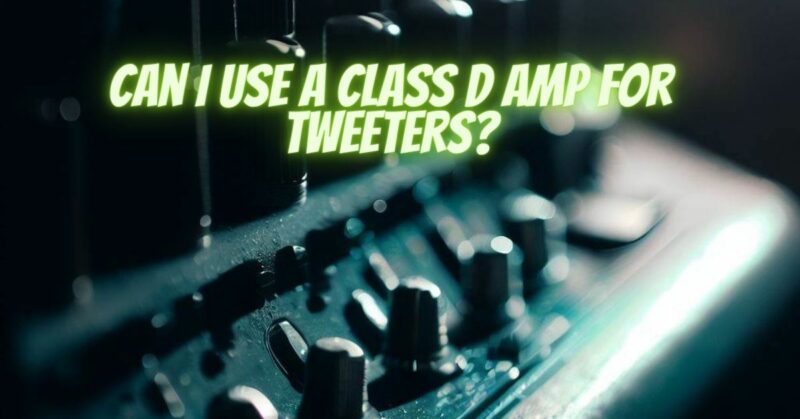Class D amplifiers have gained prominence for their efficiency and compact design, making them a popular choice for powering various audio systems. When it comes to tweeters – the delicate high-frequency drivers that reproduce intricate details in sound – the choice of amplifier becomes crucial. In this article, we’ll delve into the possibilities and considerations of using a Class D amplifier to power tweeters, examining their compatibility, advantages, and potential challenges.
Understanding Class D Amplifiers
Class D amplifiers are known for their efficient design that switches the output devices between fully on and fully off states. This switching behavior allows them to deliver high power with minimal heat dissipation, making them energy-efficient and compact.
Using Class D Amps for Tweeters: Compatibility and Considerations
- Frequency Range: Tweeters reproduce high-frequency sounds, which often require accurate and fast response from amplifiers. While Class D amps can handle high frequencies, it’s important to ensure the specific amplifier’s frequency response aligns with the tweeter’s capabilities.
- Power Matching: Tweeters typically require less power than larger drivers. Class D amplifiers are capable of delivering varying power levels, so it’s essential to select an amplifier that matches the power needs of your tweeters without overwhelming them.
- Efficiency: Class D amplifiers are highly efficient, but the efficiency can vary between models and brands. Look for amplifiers with minimal distortion and noise levels to ensure pristine high-frequency reproduction.
- Crossover Configuration: Tweeters are often used in conjunction with woofers or mid-range drivers, requiring proper crossover configuration to direct the appropriate frequency ranges to each driver. Ensure that the amplifier’s crossover capabilities align with your speaker setup.
- Impedance Matching: Verify that the impedance (ohms) of your tweeters and amplifier match to prevent impedance mismatches that could impact sound quality and potential damage.
Advantages of Using Class D Amps for Tweeters
- Efficiency: Class D amplifiers are energy-efficient and generate less heat compared to traditional amplifiers, which can help prolong the lifespan of tweeters.
- Compact Size: Class D amps’ compact design makes them suitable for space-constrained setups.
- Low Heat Dissipation: Minimal heat generation ensures that tweeters are subjected to lower thermal stress.
- Reduced Power Consumption: Energy efficiency is particularly advantageous for setups that run for extended periods.
Challenges and Considerations
- High-Frequency Accuracy: While Class D amps can handle high frequencies, not all models are optimized for the rapid response required by tweeters. Choose an amplifier with a high-frequency response that matches your tweeters’ capabilities.
- Quality Variation: The quality of Class D amplifiers can vary widely across brands and models. Opt for reputable brands and models with positive reviews to ensure satisfactory performance.
Using a Class D amplifier to power tweeters can be a successful endeavor, provided you carefully assess compatibility, power requirements, and the specific needs of your audio setup. The efficiency and compact design of Class D amplifiers can offer benefits for tweeter performance, but it’s important to choose an amplifier with the appropriate frequency response, power levels, and impedance matching. Ultimately, by making informed choices and ensuring compatibility, you can enjoy the benefits of efficient amplification while preserving the delicate nuances and intricate details that tweeters are designed to reproduce.


